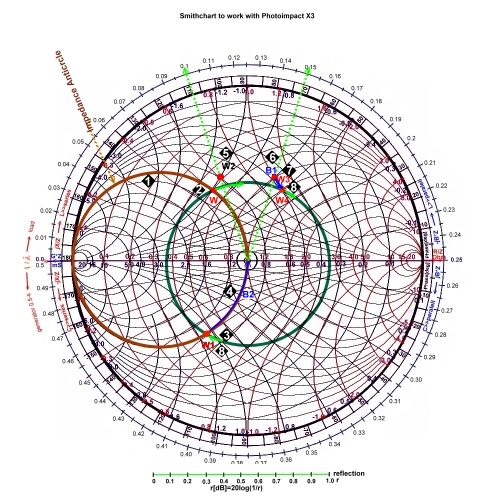

use shunt open stub onlyĭouble-Stub Tuning Preferable because its not sensitive to the initial line length. Open shunt stubjB = - j1.9 = jtanll = -1.086 + = 2.055length = 0.327 > /4Ĭan use any type depends on realization.e.g. In practice, usually shunt stubs,short stub for waveguides, Single Stub Tuningrefers to sliding a stub (any kind)along a transmission line. Match with just 1 lossless transmission line? One way, simply replace lumped elements with stubs If ZL is inside the R=1 circle,first element cannot be in series If ZL is inside the G=1 circle,first element cannot be shunt Ideally, match all Zo = Zg = ZL = real, then all 3 PLoad are the same = Pmax.Ĭhoices: lumped elements transmission line (single, multiple) I worry I've missed an important point here. But, it seems to me that the kind of impedance matching operation described above is simply using the impedance(conductance) map and its ability to express complex addition and subtraction to move from one point to another and each points relationship to reflection isn't really relevant. In other words, the charts "meaning" is related to reflection. What I don't understand is, where is the reflection coefficient in any of this? If I understand the chart correctly, it basically maps the reflection coefficient for a normalized characteristic impedance to every possible (within reason) impedance (or conductance). If you need to match one impedance to another (one would be a conjugate), you simply identify the two impedances on the chart (normalized if necessary) and track a path between the two using the rules above. If you use a combined impedance and conductance chart you can easily model ladder networks, which of course is exactly what you need for an L, Pi or T matching network. Likewise, adding reactive elements in shunt can be achieved with the conductance form of the Smith Chart again using a simple addition or subtraction. The text points out that adding reactive elements in series with a resistor is a simple matter of adding the appropriate imaginary quantity, thus moving you along the constant resistance circle. He uses some of the earlier matching examples (solved using equations) and shows how the same result can be obtained using the Smith Chart. I've been reading the impedance matching chapter of Bowick's excellent RF Circuit Design book and I have a question.įor those who haven't read this book (or have but can't remember!), the chapter discusses L and 3 element matching networks (very intuitively, I might add) with some helpful examples before moving to an introduction to the Smith Chart.


 0 kommentar(er)
0 kommentar(er)
